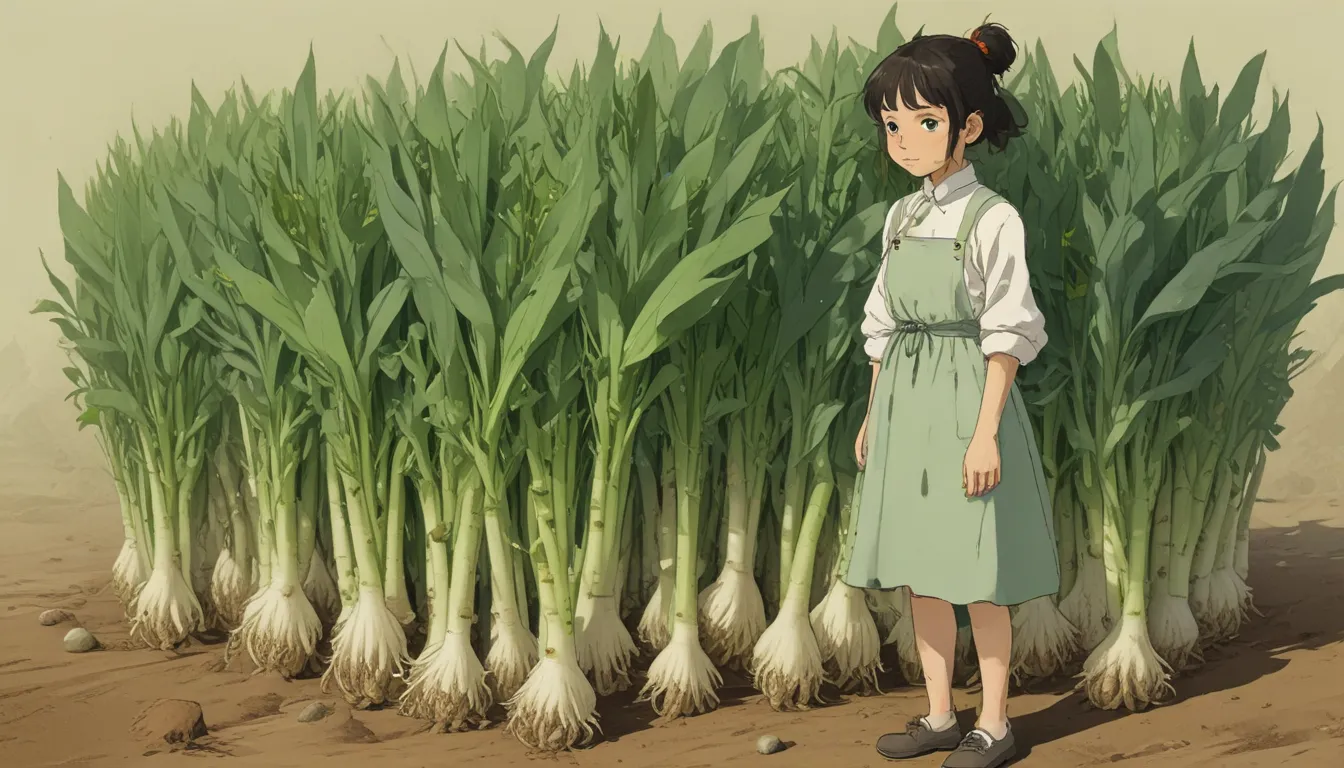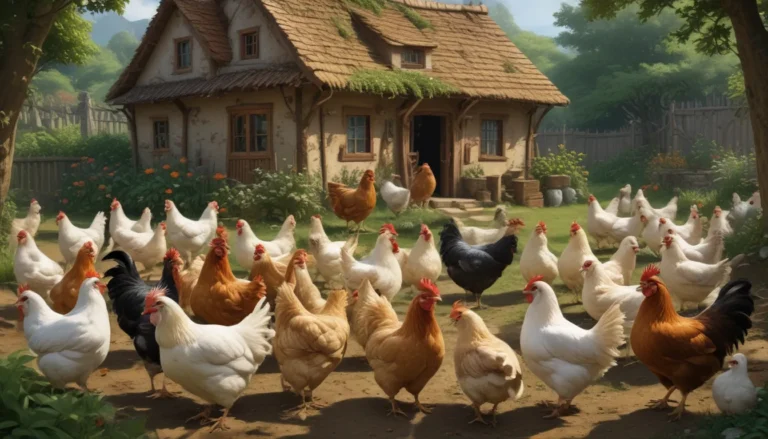A Comprehensive Guide to Growing Leeks

Leeks, scientifically known as Allium ampeloprasum var. porrum, are a delicious and versatile vegetable that offers a mild, sweet onion-like flavor. Resembling a larger green onion, leeks are a cool-weather crop that requires a specific set of conditions to thrive. Today, we will explore everything you need to know about cultivating, growing, and harvesting leeks. So, grab your gardening gloves and get ready to dive into the fascinating world of leeks!
Understanding Leeks – A Brief Overview
Leeks have a rich history dating back to ancient times, with origins in the eastern Mediterranean and the Middle East. They were a staple in the diets of ancient civilizations such as Egypt and Rome. Even the legendary emperor Nero had a fondness for leeks, consuming them daily to strengthen his voice.
The Greek physician Hippocrates even prescribed leeks as a remedy for nosebleeds. Leeks spread across Europe and eventually made their way to North America with European settlers.
The leek holds a special significance in Wales, where it is the national emblem and worn proudly on St. David’s Day. With such a colorful history, it’s no wonder that leeks have become a beloved vegetable in many cuisines around the world.
Getting Started: Cultivation and Propagation
Cultivation
To grow leeks successfully, you need rich, well-draining soil with a pH between 6.0 and 7.0. Leeks require a minimum of eight hours of sunlight daily for optimal growth. Depending on the variety, leeks can take anywhere from 90 to 150 days to mature.
Leeks have a shallow root system and need about an inch of water per week. Mulch the growing area well to retain moisture and suppress weeds. To encourage more edible stalks and less green growth, cover the lower part of the stems with soil or a protective sheath made of cardboard.
Midway through the growing season, side dress the plants with a balanced fertilizer to ensure healthy growth. Leeks are cold-tolerant and can withstand temperatures as low as 5°F. However, it’s essential to harvest them before the ground freezes to avoid any damage.
Propagation
You can start leeks from seeds indoors or direct sow them outdoors. When transplanting seedlings, make sure to set them into narrow holes in rows spaced one foot apart. With proper care and attention, leeks will thrive and produce a bountiful harvest.
You can also propagate leeks from kitchen scraps by using the rooted bit at the end of a leek stalk. Simply place the rooted part in water until new growth emerges, then transplant it into your garden or container.
Growing Tips for Successful Leek Cultivation
To ensure a successful leek harvest, here are some essential growing tips to keep in mind:
- Provide at least eight hours of full sunlight daily for optimal growth.
- Cover the lower part of the stems to produce more edible stalks.
- Side dress with a balanced fertilizer midway through the growing season to promote healthy growth.
Selecting the Right Cultivar
Leeks come in various cultivars, each with its unique characteristics. Here are a few popular leek cultivars to consider for your garden:
American Flag
- Hardy variety that can overwinter in mild climates.
- Grows to 20 inches tall with thick, blue-green leaves.
- Matures in 130 days.
Early Giant
- Early maturing variety with consistent size and great flavor.
- Ready to harvest in 98 days.
Autumn Giant Leek
- Tall heirloom variety that reaches 30 inches with three-inch wide stalks.
- Ready to harvest in 135 to 150 days.
Lancelot
- Adaptable hybrid with 12- to 14-inch white shafts and dark blue-green flags.
- Matures in 75 days.
Pest and Disease Management
Like any plant, leeks are susceptible to pests and diseases that can affect their growth and productivity. Here are some common pests and diseases that may impact leeks:
Insects
- Leafminers: Use neem oil to control these pests.
- Onion Maggots: Prevent infestations through crop rotation and destroy affected plants.
- Thrips: Control with insecticidal soap or neem oil.
Disease
- Rust
- Botrytis Leaf Blight
- Damping Off
- Downy Mildew
- Pink Root
- Purple Blotch
- White Rot
Good airflow, proper planting techniques, and diligent weed management can help protect your leeks from common pests and diseases.
Harvesting and Preserving Your Leek Harvest
Knowing when and how to harvest your leeks is essential for ensuring a successful harvest. Most leek varieties are ready for harvest when the stems reach at least one inch in width. Harvest leeks by gently twisting and pulling them from the soil or by digging around them to lift them out. Trim the leek tops to a manageable length for storage.
To preserve your leeks for long-term storage, store them in an airtight bag in the refrigerator or use the root-end down method in sand or sawdust in a cool, dry place. You can also freeze leeks by blanching them and storing them in plastic freezer bags.
Cooking with Leeks: Delicious Recipes to Try
Leeks are a versatile vegetable that can be used in a variety of dishes to add flavor and nutrition. Before cooking with leeks, be sure to clean them thoroughly to remove any dirt or grit between the layers. For best results, use the white and light green parts of the leek in your recipes and compost the dark green leaves.
From classic dishes like potato leek soup to savory delights like chicken pot pie, there are countless ways to incorporate leeks into your cooking. Explore new recipes and experiment with different flavor combinations to discover the full potential of this delicious allium.
Quick Reference Growing Guide for Leeks
To help you grow leeks successfully, here is a quick reference guide with essential information:
- Plant Type: Biennial
- Tolerance: Sun
- Water Needs: 1 inch per week
- Hardiness (USDA Zone): 5-10
- Maintenance: Medium
- Season: Spring or fall
- Soil Type: Rich
- Exposure: Full sun
- Soil pH: 6.0-7.0
- Time to Maturity: 80-150 days, depends on variety
- Soil Drainage: Well-draining
- Spacing: 6 inches
- Companion Planting: Other alliums
- Avoid Planting With: Beans and legumes
- Height: 2-3 feet
- Spread: 6-12 inches
- Family: Amaryllidaceae
- Genus: Allium
- Species: A. ampeloprasum var. porrum
- Common Pests: Leafminer, onion maggot, thrips
- Common Disease: Rust, botrytis leaf blight, damping off, downy mildew, pink root, purple blotch, white rot
Conclusion: Growing Your Own Leeks at Home
Growing leeks in your garden can be a rewarding experience that allows you to enjoy fresh, nutritious vegetables right at your doorstep. With proper cultivation, care, and maintenance, you can harvest a bountiful crop of leeks to use in a variety of dishes.
Whether you’re a seasoned gardener or a beginner looking to expand your gardening skills, leeks are a versatile and flavorful addition to any garden. So, why not try growing your own leeks at home and explore the wonderful world of this delicious allium?
Do you have any tips or experiences to share about growing leeks? Feel free to share your wisdom in the comments below! Happy gardening!
With this comprehensive guide, you now have all the information you need to grow leeks successfully at home. From cultivation and propagation to pest management, harvesting, and cooking ideas, this article covers everything you need to know to become a leek-growing expert. So, roll up your sleeves, get your gardening tools ready, and start growing your own delicious leeks today!





